7 Outdoor Plants That Can Survive Extreme Heat, Gardening Experts Say
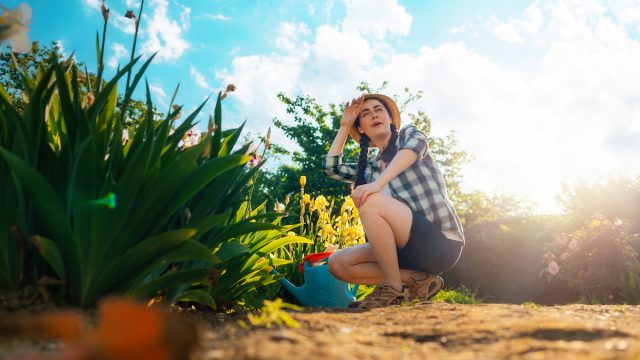
Temperatures are rising as we approach high summer, and if you haven’t already, you may soon begin to notice the heat affecting your garden. While some plants will blossom under the glare of the sun, others will wilt, unable to withstand the extreme heat. Planning ahead by choosing the right plant types can help ensure that they thrive in your sweltering summer climate. Read on to hear from gardening experts about the seven most heat-tolerant outdoor plants.
READ THIS NEXT: 8 Easy Outdoor Plants That Don’t Need Sunlight.
The 7 Best Heat-Tolerant Plants for Your Garden
1. Bougainvillea
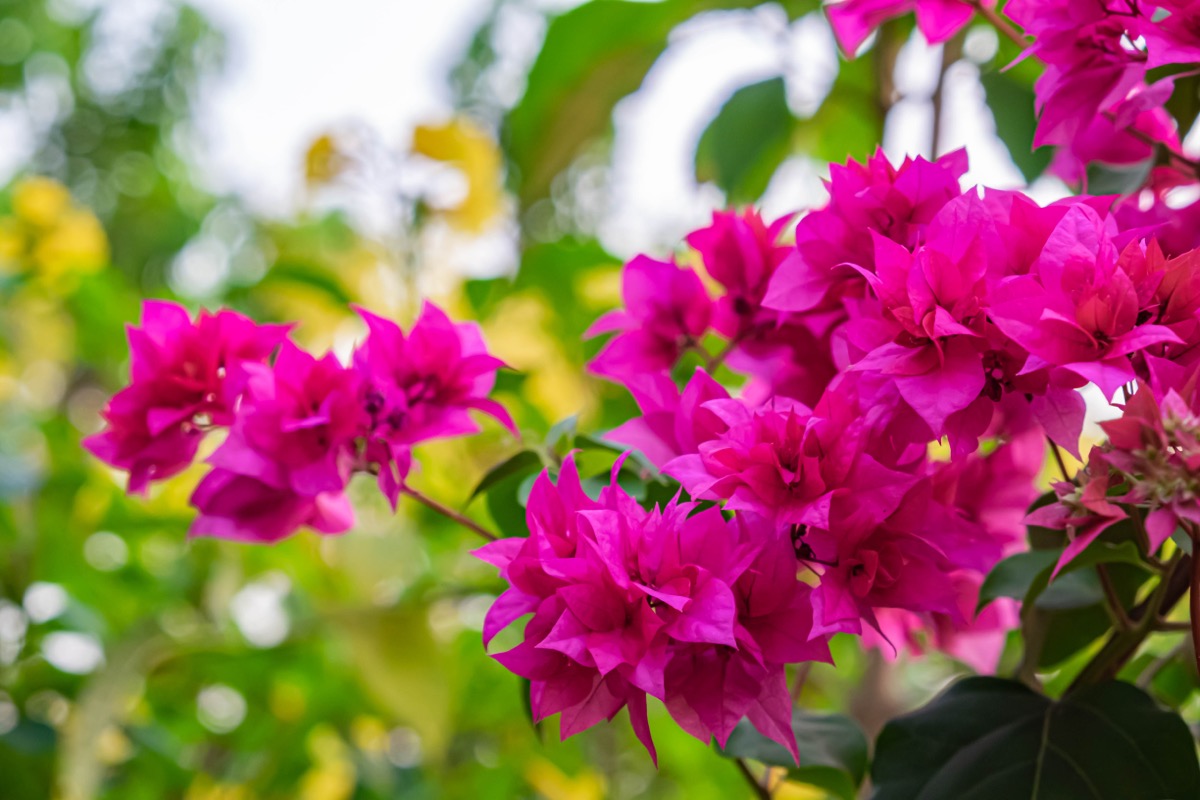
Blooming in shades of magenta and violet, bougainvillea are tropical flowers that burst with vibrant color. Besides their striking visual appeal, bougainvillea are also resilient in extreme heat: They require a minimum of five hours of sunlight each day and can thrive in temperatures up to 100 degrees.
“This vivacious flowering vine is an absolute fanatic for direct sunlight,” says Silvia Borges, owner and chief editor of the green living site Enviromom. “It does wonderfully in sultry conditions and requires significantly less water once planted firmly in its place of choice.”
2. Texas sage
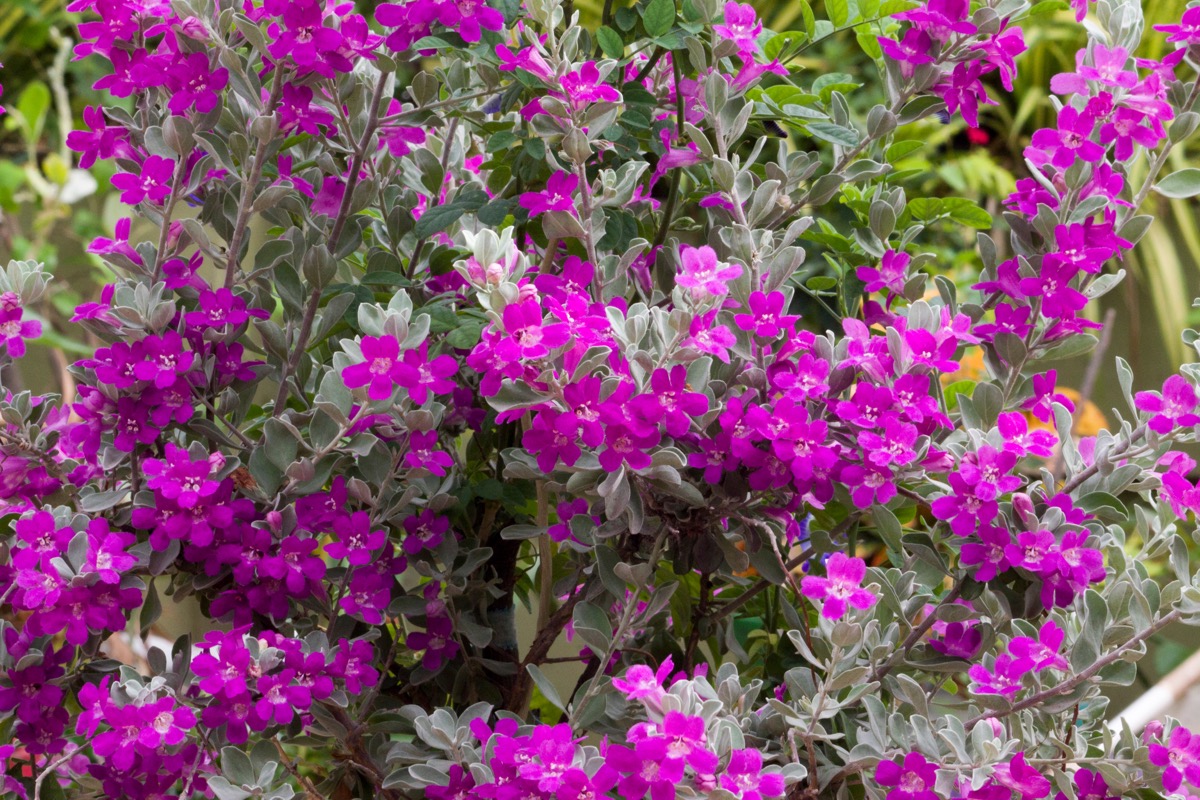
Known for its heat and drought tolerance, Texas sage prefers full sun exposure to promote healthy growth. However, it can also withstand low temperatures, staying evergreen through the winter down to 10 degrees Fahrenheit.
“The Texas ranger, also known as Texas sage or purple sage, is a highly resilient shrub that thrives in hot and dry climates,” says Zahid Adnan, founder of The Plant Bible. “Its silver-gray foliage and vibrant purple flowers make it an attractive addition to any arid garden.”
READ THIS NEXT: 5 Plants That Will Keep Mosquitoes Out of Your Yard, According to Pest Experts.
3. Lantana
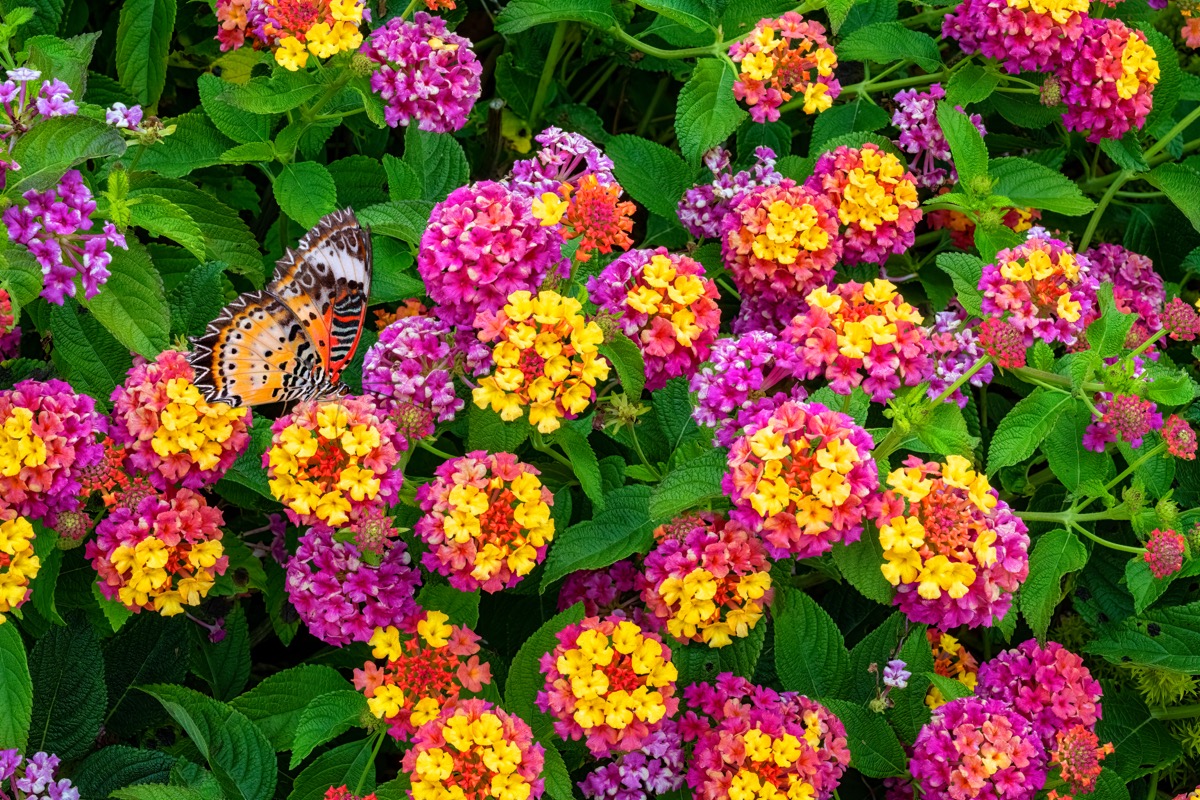
Lantana plants can withstand high heat and are also drought-tolerant, making them particularly resilient in the summer months. They produce colorful clusters of flowers in shades of yellow, pink, red, and orange, which Borges notes can help “attract butterflies and add a charming touch to your landscape.”
Expert horticulturists say that lantana is not only able to survive in extreme heat—these are the conditions the plant thrives in.
“You don’t really know lantana until you’ve seen it in a hot, frost-free climate,” wrote The Seattle Times in 2009. “It’s a colorful monster, growing increasingly vivid in the dead heat of summer. Triple-digit temperatures degrees send it into overdrive, producing even more color when all else withers.”
However, there are a handful of maintenance rules that are important to bear in mind, Borges says. She notes that lantanas love well-drained soil and require occasional watering.
4. Salvia
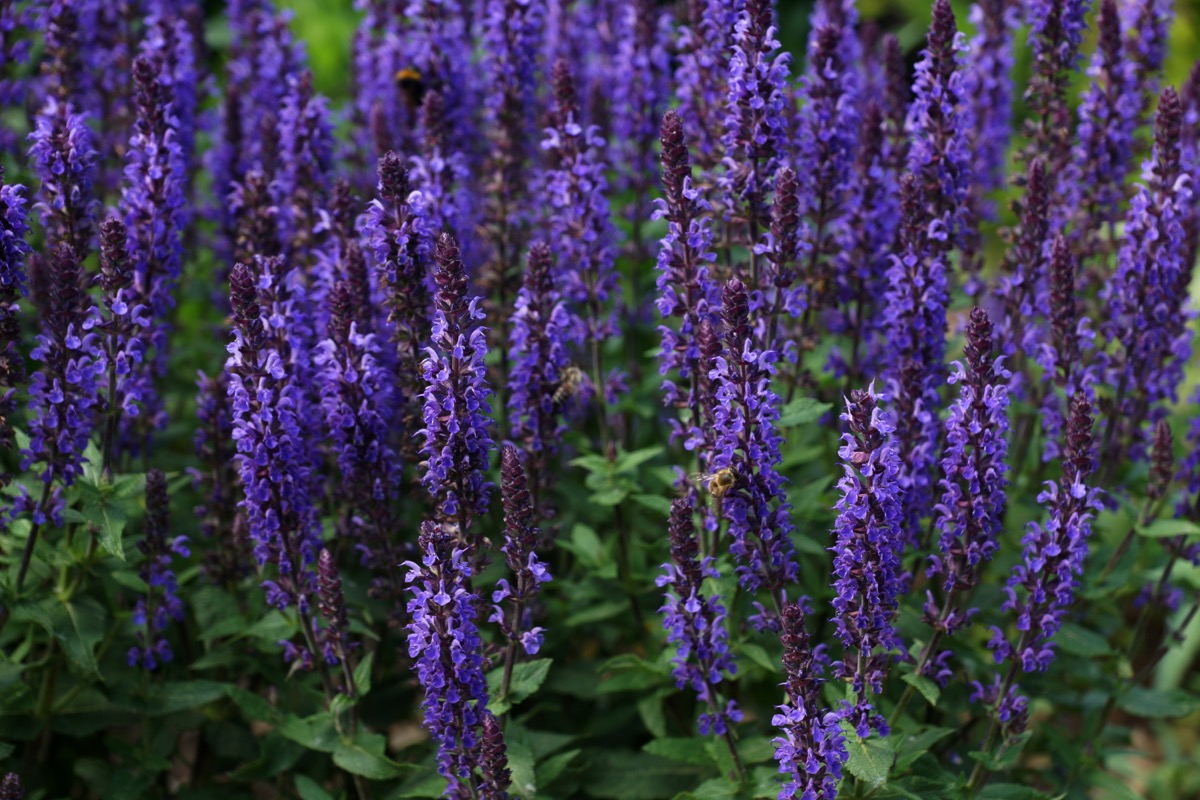
Salvia is another plant that grows beautifully despite high heat, humidity, and drought conditions. Mystic spires blue salvia is a particularly popular choice, growing up to 24 inches tall and blooming with indigo-colored flowers on long stems.
Besides its practicality in high-heat planting zones, Borges says salvia offers a range of other benefits. “It comes in vibrant colors, attracts hummingbirds, and will keep returning year after year.”
READ THIS NEXT: 23 Poisonous Plants Hiding in Your Backyard.
5. Yucca
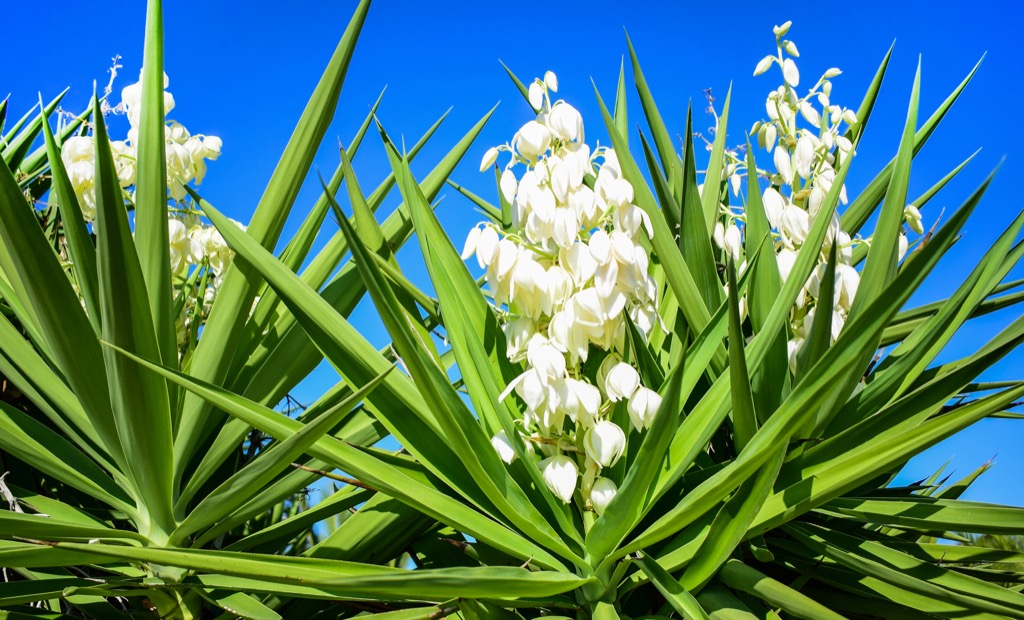
Indigenous to some of the hottest climates in North America, South America, and the Caribbean, yucca plants are ideal for withstanding extreme summer temperatures.
“Yucca plants are adapted to hot, dry desert climates. They have tough, sword-like leaves and produce tall spikes of white flowers. Plant them in full sun and well-draining soil, and they’ll need little to no extra watering,” says Amelia Haslehurt, founder of Locally Grown Gardens.
6. Agave
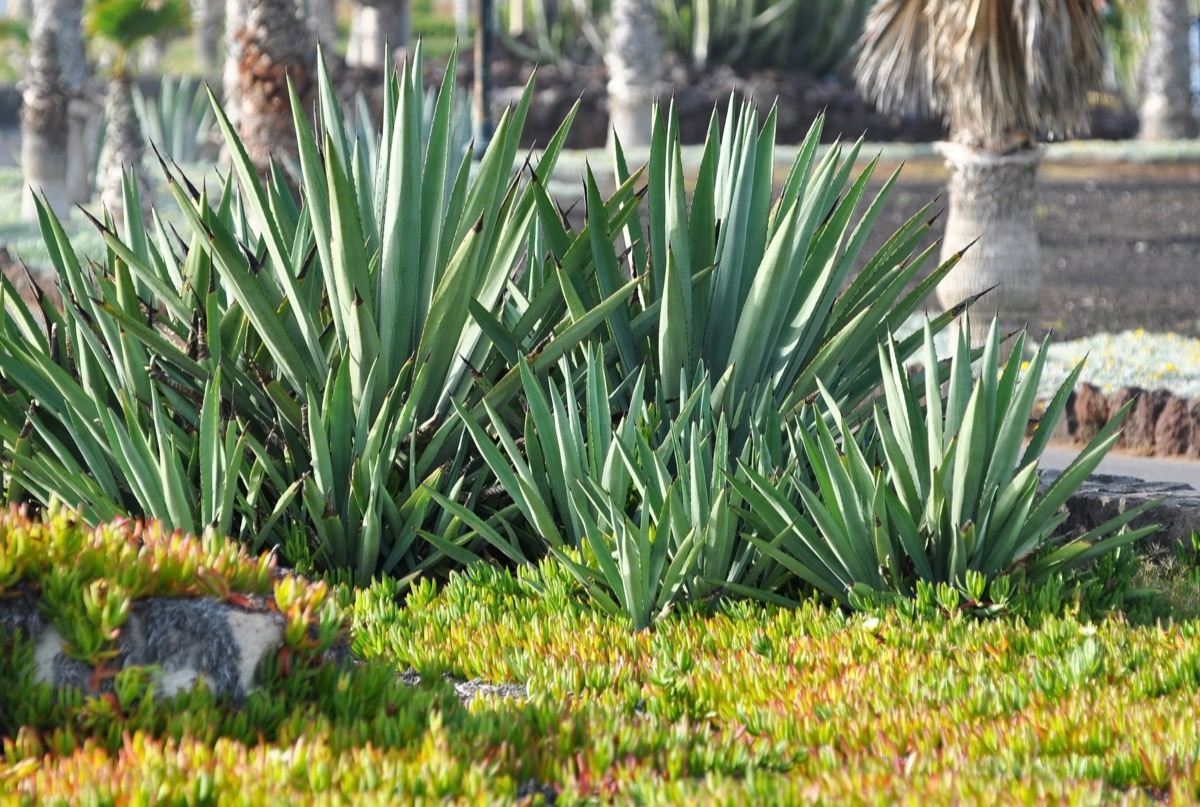
Succulents, such as agave plants, are known to thrive in extreme heat. They also require very little in terms of watering, making them a low-maintenance feature in the garden.
“You don’t need much effort to take care of them, only plant them with well-drained soil and you’re good to go!” says Borges.
Haslehurt explains why the agave plant is so self-sufficient: “A desert plant native to the Americas, Agave species are uniquely designed to handle heat and drought due to their thick, waxy leaves and rosette growth form, which is used to channel any rainfall to their roots.”
For more garden advice delivered straight to your inbox, sign up for our daily newsletter.
7. Portulaca
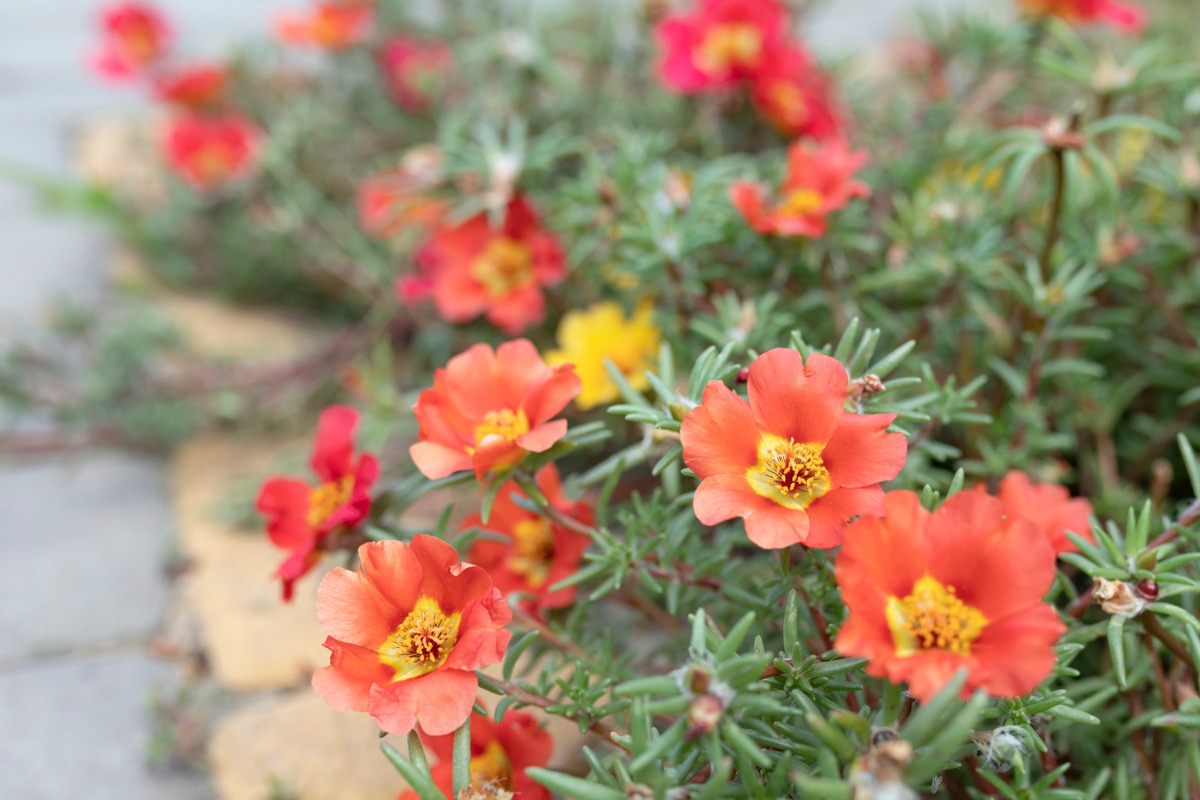
Finally, portulaca is a flowering plant with over 100 species to choose from—and experts say it should be right at home in any hot-weather garden. It needs six to eight hours of direct sunlight daily, meaning you can plant it in areas that might otherwise be unforgiving to less sun-tolerant plants.
“This tiny plant, also known as ‘moss rose,’ loves hot, dry weather like no other. It’s a ground cover that brings stunning rose-like flowers into the picture—perfect for rock gardens or hanging baskets!” says Borges.